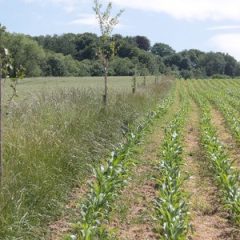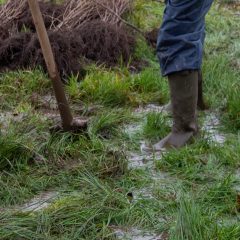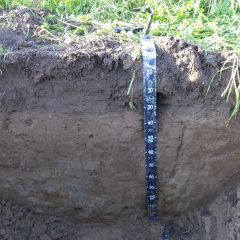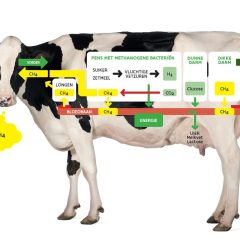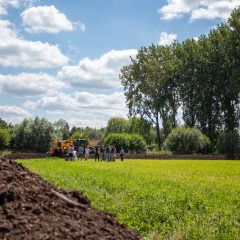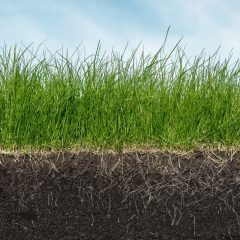Dossier Erosion
- Soil
- Carbon
- Erosion
- Compaction
- Compost
- Tillage
- Non-inversion tillage
- Soil improvement
- Flooding
- Water
- Climate change
Soil erosion is a major problem in the hilly regions of southern Flanders, and will become even more important as a result of climate change. Erosion has agricultural, social and environmentally negative consequences. ILVO is investigating which cultivation measures can counteract the risk of erosion.
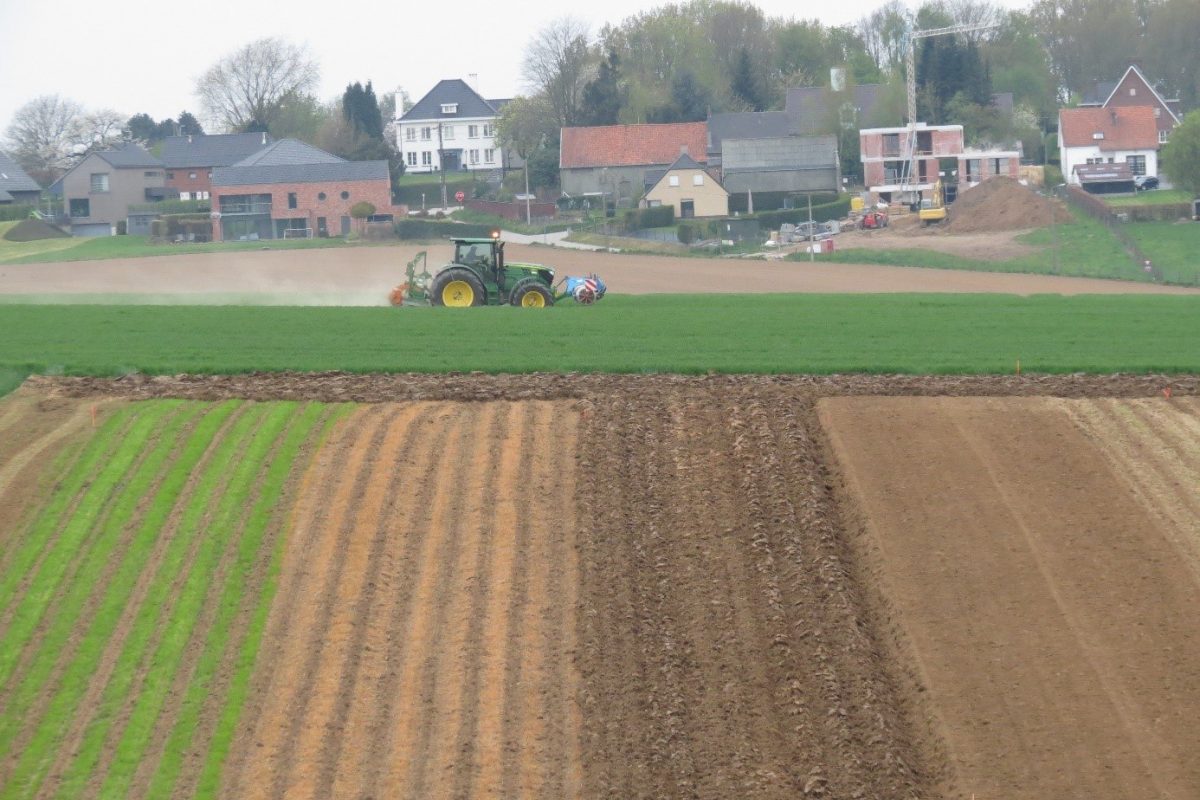
What does ILVO do?
-
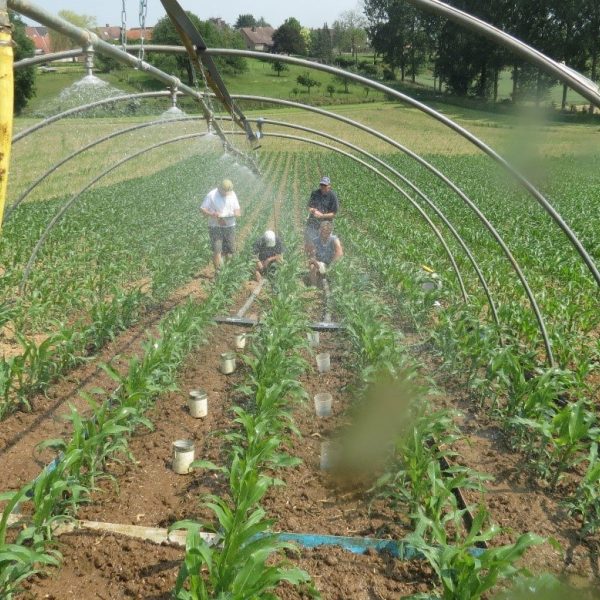 ILVO is investigating how cultivation techniques can be adapted so that the risk of erosion is reduced, without loss of yield.
ILVO is investigating how cultivation techniques can be adapted so that the risk of erosion is reduced, without loss of yield. -
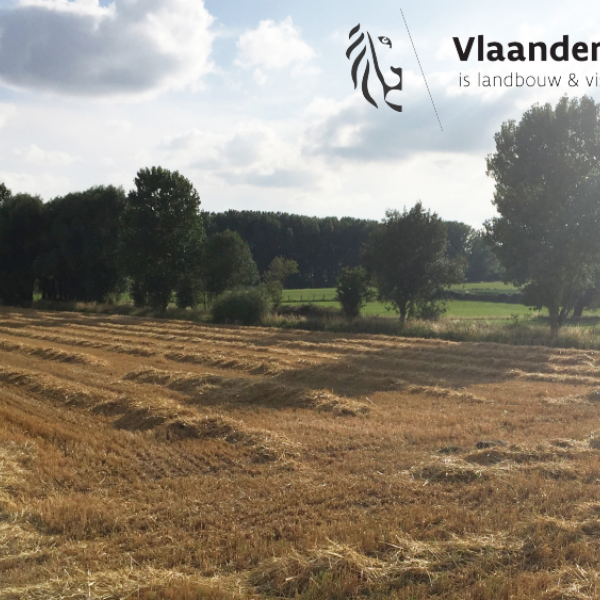 ILVO is investigating measures to increase the carbon content in the (top)soil, as this provides an effective buffer against erosion.
ILVO is investigating measures to increase the carbon content in the (top)soil, as this provides an effective buffer against erosion. -
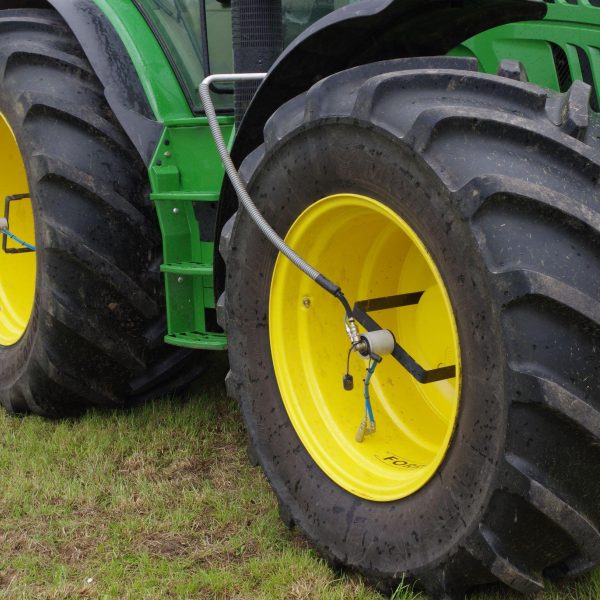 If the soil is compacted, water will run off faster. ILVO is investigating how soil compaction can be avoided or remedied.
If the soil is compacted, water will run off faster. ILVO is investigating how soil compaction can be avoided or remedied. -
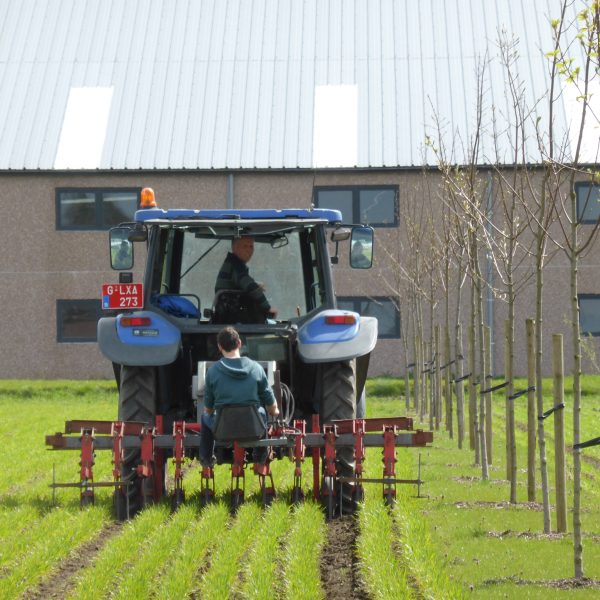 In this type of agroforestry, a ditch-berm structure follows the lines of the landscape. This allows water to spread more evenly.
In this type of agroforestry, a ditch-berm structure follows the lines of the landscape. This allows water to spread more evenly.
What is erosion?
Soil or water erosion is the process by which soil particles are loosened and displaced by impacting raindrops or runoff water. This can cause the soil to wash away superficially or in gullies, and in extreme conditions can even create ravines.
In the hilly regions of southern Flanders, the risk of soil erosion is greatest.
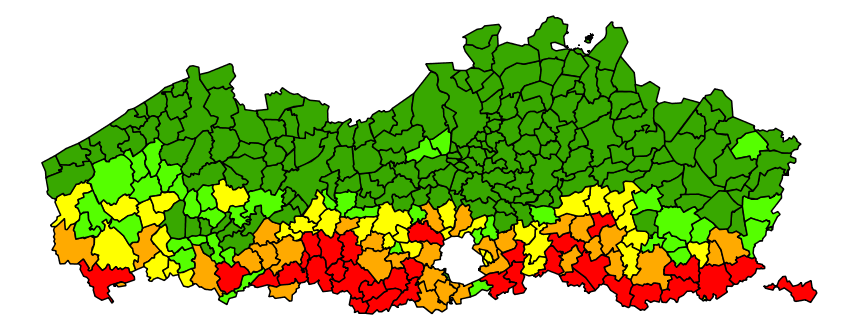
When are plots most susceptible to erosion?
The most sensitive period for erosion is the spring when the soil has been crushed for sowing or planting and the crops still only cover a small proportion of the soil surface. Moreover, this period also coincides with the period when there is the highest probability of intense rain or thunderstorms in Belgium.
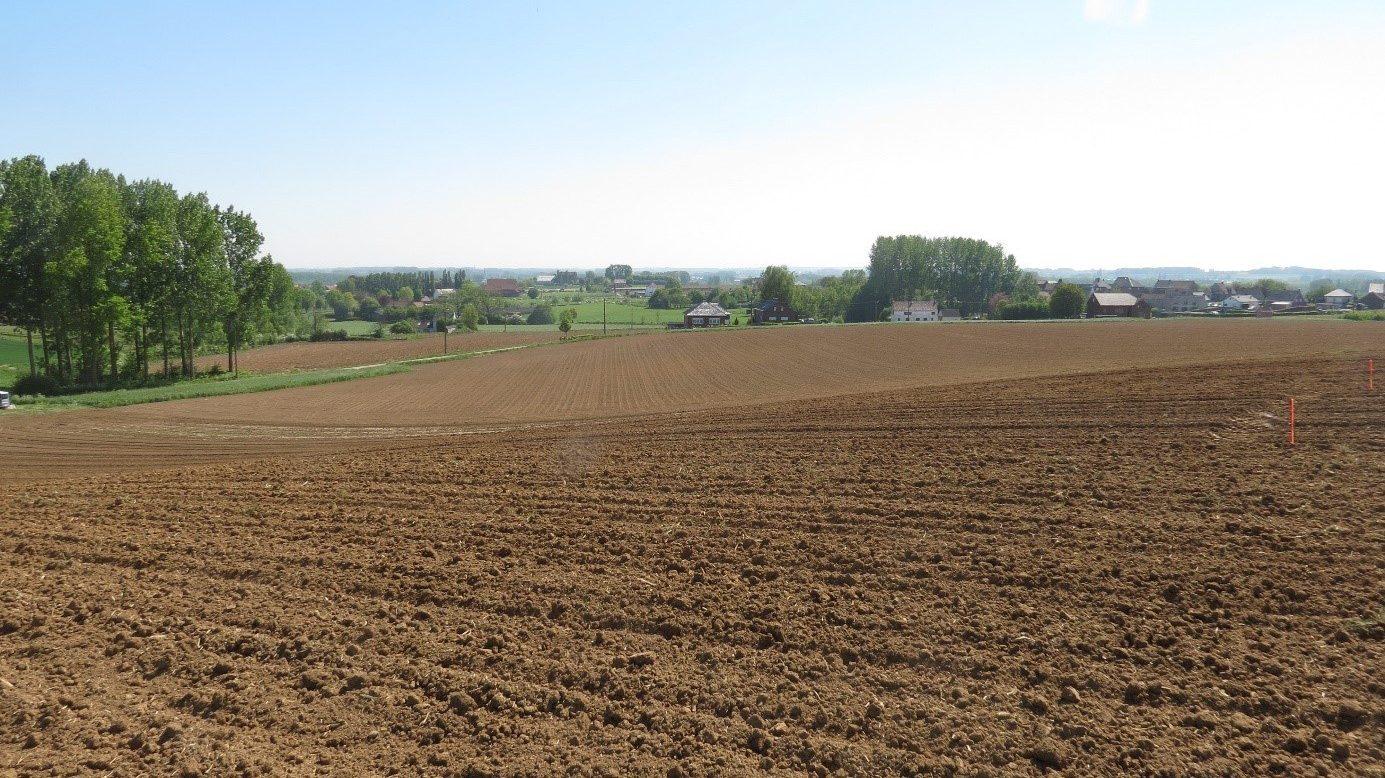
Erosion and climate change
Various climate models predict that climate change will be felt in Flanders mainly in the form of more heat waves, drought and longer periods of drought, as well as more short and intense rainstorms. The chance of rain causing a lot of erosion will therefore increase.
This makes it necessary for us to better protect our soils from intense rain showers. At the same time, we must ensure that more water has the chance to infiltrate the soil during these showers, so that our water buffers are replenished against later periods of drought.
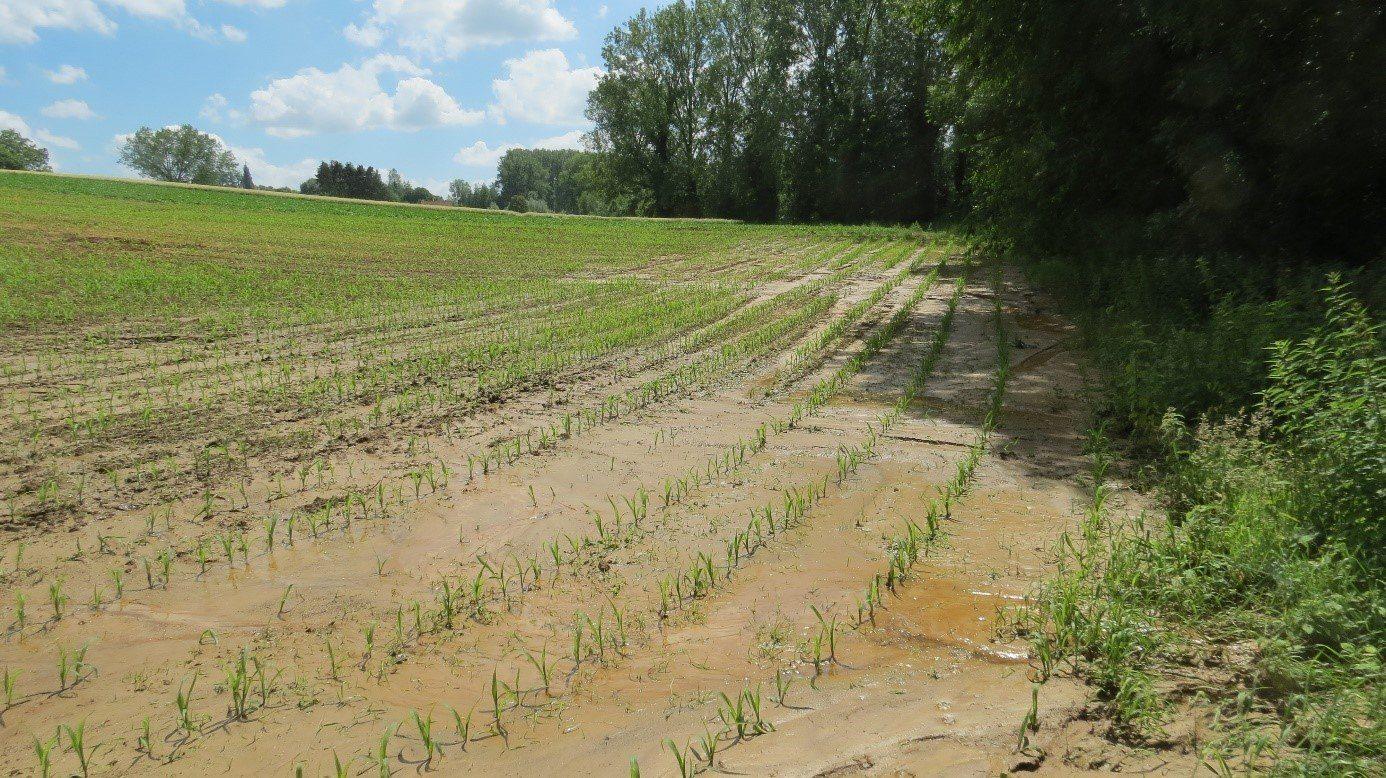
What rules of thumb apply to avoid erosion?
There are two main ways to combat erosion:
- Making the soil more erosion-resistant.
- Softening the intensity of the rain and water flows.
Specifically, this translates into some rules of thumb that a farmer can use to limit erosion:
- Maintain organic matter content and pH
- Avoid soil compaction so that water can penetrate the soil well
- Keep the soil covered as much as possible with crops, e.g. green coverers or crops with a good (and fast) groundcover
- Keep crop residues/ green cover crop residues on the surface by not plowing
- Leave more clods in the seedbed
- Avoid preferential lines along which water drains off more quickly, e.g., by building thresholds between ridges and clearing tire tracks
Erosion and non-inversion tillage
ILVO has been doing research on non-inversion tillage for years, both on practical fields and on long-term trial fields, whether or not in collaboration with practical centers at home and abroad. It appears to be very effective against erosion in crops such as maize. By not turning the soil over during tillage, the organic matter remains concentrated at the top of the soil surface. This allows crop residues from a previous crop or green cover to break the force of runoff water. After decomposition, these crop residues also contribute to a higher soil organic matter content in the top layer. This stimulates the formation of more stable soil aggregates, so that soil particles are less likely to be loosened by the force of rain. Finally, non-inversion tillage also stimulates soil life, allowing more infiltration of rainwater.
However, non-inversion tillage requires a different way of working, adapted machinery and an adapted crop rotation. There may also be shifts in diseases and pests. Moreover, it does not work equally well in all crops. Research by the GOMEROS project shows that non-inversion tillage is less effective in the cultivation of peas, because this crop is in any case less sensitive to erosion. It also works less well with fine seeded crops such as onion, because these crops require a very fine seedbed to achieve good emergence and crop development, which cancels out the effect of non-inversion tillage.
Erosion in ridge crops
Crops cultivated in ridges are the most sensitive to erosion because they concentrate the rainwater between the ridges where it then quickly starts to flow. Installing thresholds or sills between the ridges can buffer this drainage. The thresholds must be sufficiently high and well placed. In some crops, they can be a hindrance, such as during hoeing. In these crops, a tine can be used to break up the superficial compaction between the ridges to allow the water to better infiltrate.
 | 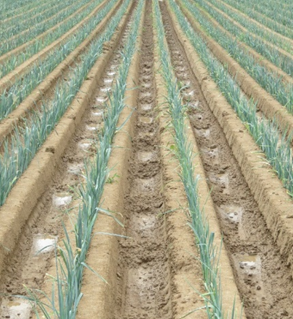 | 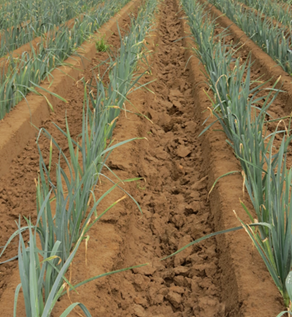 |
Regulations for erosion-sensitive plots
Erosion is affected by many factors. Some of these are beyond the farmer's control, such as relief and soil texture. In turn, the shape and size of the plots determine the nature and size of the inflow area. Together, these factors determine how much erosion can run off the plot if no erosion control measures are taken - in policy terms, this is called "potential erosion".
Using a model, policymakers estimate the potential erosion susceptibility of plots, and color code them accordingly. This is the basis of the erosion legislation, which is contained in the cross-compliance requirements that Flemish farmers must meet in order to be entitled to income support from the Common Agricultural Policy (CAP).
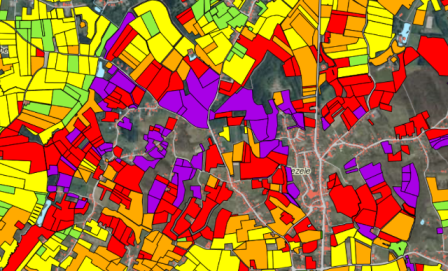
Depending on the crop and erosion susceptibility (color) of the plot, farmers should choose different combinations of the erosion control measures mentioned above. The policy is to encourage farmers to keep their soils covered as much as possible by a crop or crop residues and to work to increase soil roughness, but also to establish buffer strips and to carry out structural work such as dam construction.
Plots with optimal pH and high carbon content can drop one erosion susceptibility class. This is because optimal pH and sufficiently high carbon content are important for good soil structure and stability of the soil crumb. As a result, fewer particles will be dislodged and washed off by impacting and runoff water.
For further reading
Contact an expert
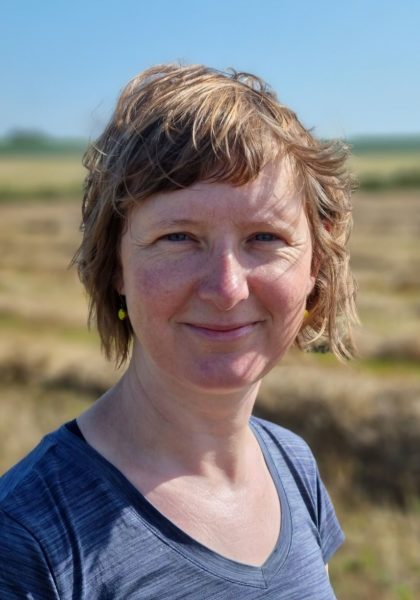
Research projects

